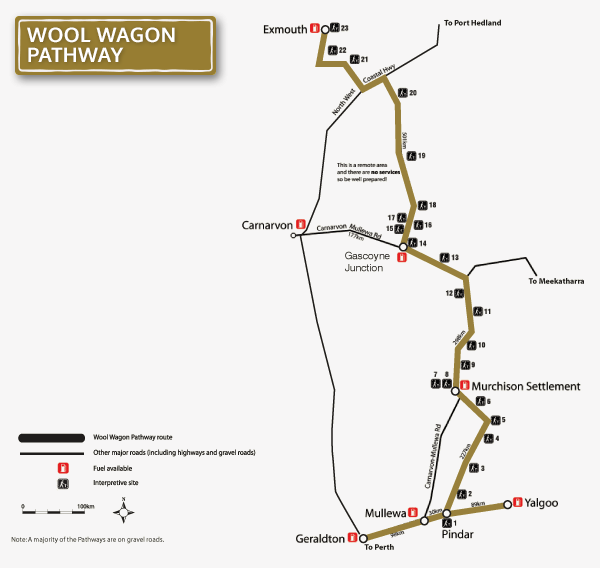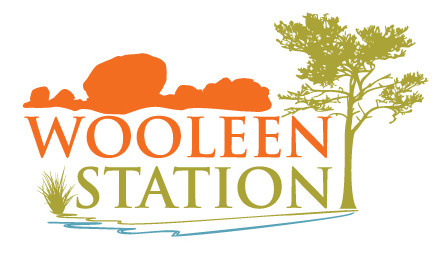The Wool Wagon Pathway is a self-drive route which exemplifies the true Australian outback. Following an itinerary, you can complete this driving holiday through some of West Australia's legendary sheep and wool country, traversing the same tracks as the early wool carts ... though the 'tracks' are graded gazetted roads these days.
The pathway begins in Pindar, a historic railhead for the region, but starting in Geraldton is recommended so you can stock up on supplies and motor vehicle checks before leaving on this driving holiday adventure. Interpretive panels are located along the entire 1269km route to give you insight into those historic times.
The Murchison district and surrounds were well known as one of the finest wool producing regions in Australia, often commanding some of the highest prices in London. Pastoral leases were settled and taken up around the 1960's onwards after extensive exploration by the likes of Lieutenant George Grey, The Gregory Brothers, and Robert Austin. The area was reported as having fine and healthy grasses for grazing both sheep and cattle. These early pioneers of the industry would shepherd their sheep through the mulga lands, sink wells to access water, blade shear the wool and then use carts drawn by horse and camel teams to take it hundreds of kms to port for sale. The lifestyle wasn't for the faint-hearted. Pure grunt and hard work were required to cope with the blistering hot summers, minimal facilities and little infrastructure to create this remarkable industry. Wooleen Station was one of the Murchison stations settled during this time by James Sharpe.
If you're planning a family getaway up Western Australia's Coral Coast to swim with the whale sharks, use the Wool Wagon Pathway to change up the scenery. Travel the pathway up to Exmouth, exploring and learning about our vast and amazing outback, and then return via the coastal roads and towns. Wooleen Station is located along the Wool Wagon Pathway and offers the perfect opportunity to stop for a few days. A range of accommodation options are available including hosted homestead stays, self-contained guesthouses, and various camping options. You can enjoy your time by learning more about these historic times of sheep by exploring our museum, visiting the remains of the 12 stand shearing shed (stop #5 on the pathway, complete with interpretive panels) and by taking a walk-trail to some of the most original wells sunk on the property. You might also like to take the time to learn about the new future of Wooleen Station; working towards a sustainable model of grazing in the outback. Self-drive routes, guided tours and mountain bike routes are all available.
We recommend taking a copy of the Gascoyne Murchison Outback Pathways guidebook on the journey which details all the points of interest along the way. The guidebook is 176 pages of information on the region with 48 pages dedicated to the Wool Wagon Pathway alone. You can get a copy from regional visitor centres or purchase a copy online before heading out
You can drive the Wool Wagon Pathway in either direction. Start at Geraldton and then head north from Pindar, into the Murchison and Gascoyne. Another option is to drive the Wool Wagon Pathway southward from Exmouth, travelling a remote outback road to Gascoyne Junction and into the Murchison.
Need a helping hand to get planning? We can send you a copy of a map which outlines the route of the Wool Wagon Pathway and basic itinerary.



